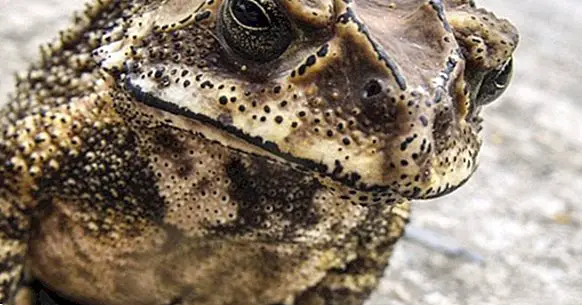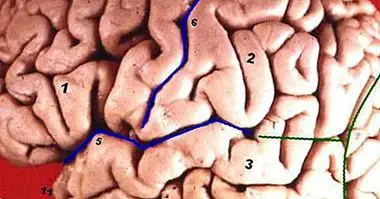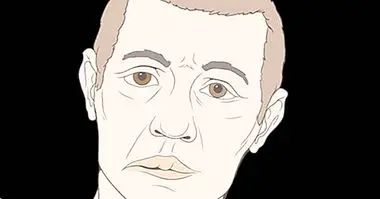Bufonofobia (fear of toads): symptoms, causes and treatment
Those fairy tales in which the princess kissed a toad to become a prince, and thus end happily ever after, would not have been possible if one of these princesses suffered from buffophobia.
This specific phobia to a specific type of amphibian is not very disabling, but it is really unpleasant for those who suffer it. Then we'll see what buffophobia is , as well as its causes, its symptoms and its possible treatment.
- Related article: "Types of phobias: exploring the disorders of fear"
What is bufofophobia?
By buffophobia we understand one of the anxiety disorders according to which the person experiences an exaggerated and irrational fear of toads . It differs from batrachophobia in that in the latter the fear sensation includes everything related to amphibians including frogs, newts and salamanders.
This type of phobia never tends to be strongly incapacitating except in those exceptions in which the person must coexist habitually with this type of animal. Sometimes very extreme people who suffer from bufonophobia may think that the animal can grow in size until they devour them.
However, This anxiety disorder differs in each of the people who suffer from it due to individual differences in the thought patterns associated with frogs and toads.
Unlike the simple animosity that each person may feel when encountering one of these amphibians, in buffophobia the individual may come to recognize that the animal does not pose a threat by itself. Despite this, she is unable to resist the exacerbated fear of provoking her.
Like the rest of existing phobias, a person with bufonophobia will surely experience a series of emotions and physical manifestations typical of a state of extremely high anxiety.
- Maybe you're interested: "The 7 types of anxiety (causes and symptoms)"
Your symptoms
As indicated in the first point, bufofophobia belongs to the classification of anxiety disorders. Therefore, the exposure of the person to the situation or phobic stimulus, in this case to the toads, will trigger an extreme response.
This symptomatology common to other phobias It can be divided into 3 groups: physical symptoms, cognitive symptoms and behavioral symptoms.
1. Physical symptoms
The appearance or sighting of the phobic stimulus causes an overactivity of the autonomic nervous system that triggers a great amount of changes and alterations of the organism. These changes include:
- Acceleration of the cardiac rate.
- Dizziness and trembling .
- Feeling of suffocation.
- Excessive sweating
- Sensation of pressure in the chest.
- Sickness .
- Gastro-intestinal alterations.
- Sensation of confusion.
- Fainting
2. Cognitive symptoms
The person suffering from bufonophobia associates similar toads and amphibians a series of irrational beliefs . These deformed ideas of reality favor the development of this phobia, and are characterized by the person assimilates a series of unsubstantiated beliefs about toads, as well as their attributes and qualities.
This cognitive symptomatology is specified in the following manifestations:
- Obsessive speculations about toads.
- Intrusive thoughts, involuntary and absolutely uncontrollable about the supposed danger of toads.
- Catastrophic mental images related to these amphibians.
- Fear of losing control and not being able to manage the situation satisfactorily.
- Feeling of unreality
3. Behavioral symptoms
Any anxiety disorder of this kind is accompanied by a series of symptoms or behavioral manifestations that appear as a reaction to the aversive stimulus.
These behaviors or behaviors are aimed at either the avoidance of the dreaded situation or the flight once the stimulus appeared. The latter are known as escape behaviors.
The behaviors that have as goal to avoid the encounter with toads and / or frogs, make reference to all those behaviors or acts that the person realizes to avoid the possibility of being with these. Thus Momentarily avoids experiencing feelings of anguish and anxiety that generate these animals.
With regard to escape behavior, in the event that the person can not avoid encountering the phobic stimulus, he will carry out all kinds of behaviors that allow him to escape from this situation as quickly and quickly as possible.
Which can be the causes?
Like the rest of phobias, in the majority of cases of bufonophobia, it is practically impossible to determine exactly the origin of this irrational fear.However, we can theorize that its etiology would have the same basis as the rest of specific anxiety disorders.
This means that a person with a genetic predisposition to suffer from an anxiety disorder that faces, at some point in their life, a traumatic emotional experience or with a high emotional load and related in some way with the appearance of toads or frogs, will be much more likely to develop a phobia associated with these amphibians.
On the other hand, although there are also adults with bufofophobia, this disorder occurs especially in children; so the theories that put learning as the starting point of the phobia have enough support.
These theories establish that in the smallest phobias are usually caused by the acquisition of behaviors observed in adults , which, in some occasion, may have manifested anxiety behaviors before a concrete stimulus. These behaviors are unconsciously assimilated by the child and fostered until they become phobias.
Is there a treatment?
It has already been commented at the beginning of the article that buffophobia does not tend to be incapacitating, except in those cases in which the person must live daily with toads and frogs. That is, due to the nature of the phobic stimulus, the anxiety response does not interfere with the day to day of the person.
However, in the few cases in which the person uses professional help with the intention of reducing their fear of these animals, the intervention through psychotherapy (specifically through cognitive-behavioral therapy) is highly effective.
Using techniques such as live exposure or systematic desensitization, accompanied by training in relaxation techniques and cognitive restructuring, the person can overcome their phobic fear and continue their life in a normal way.



















